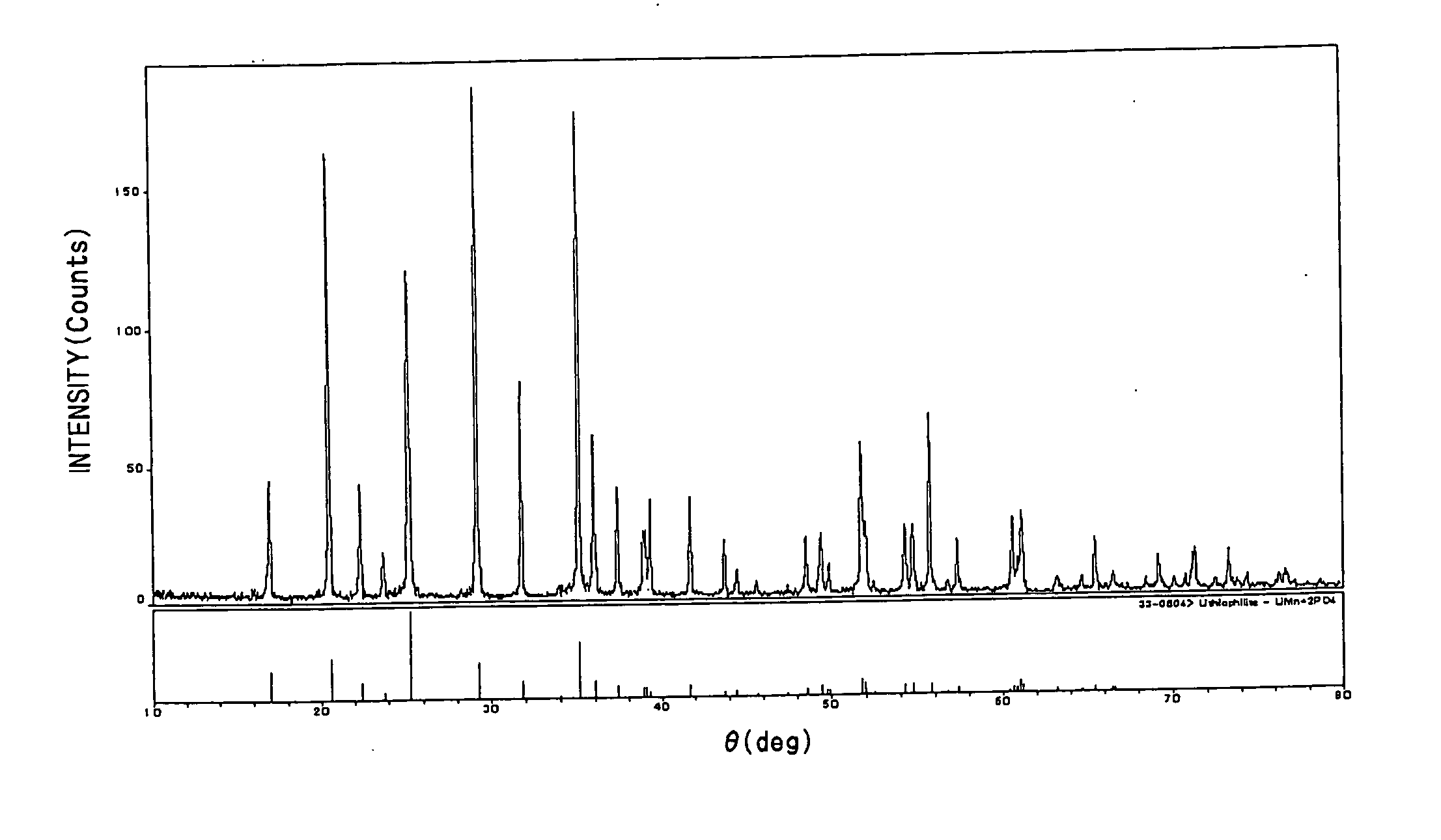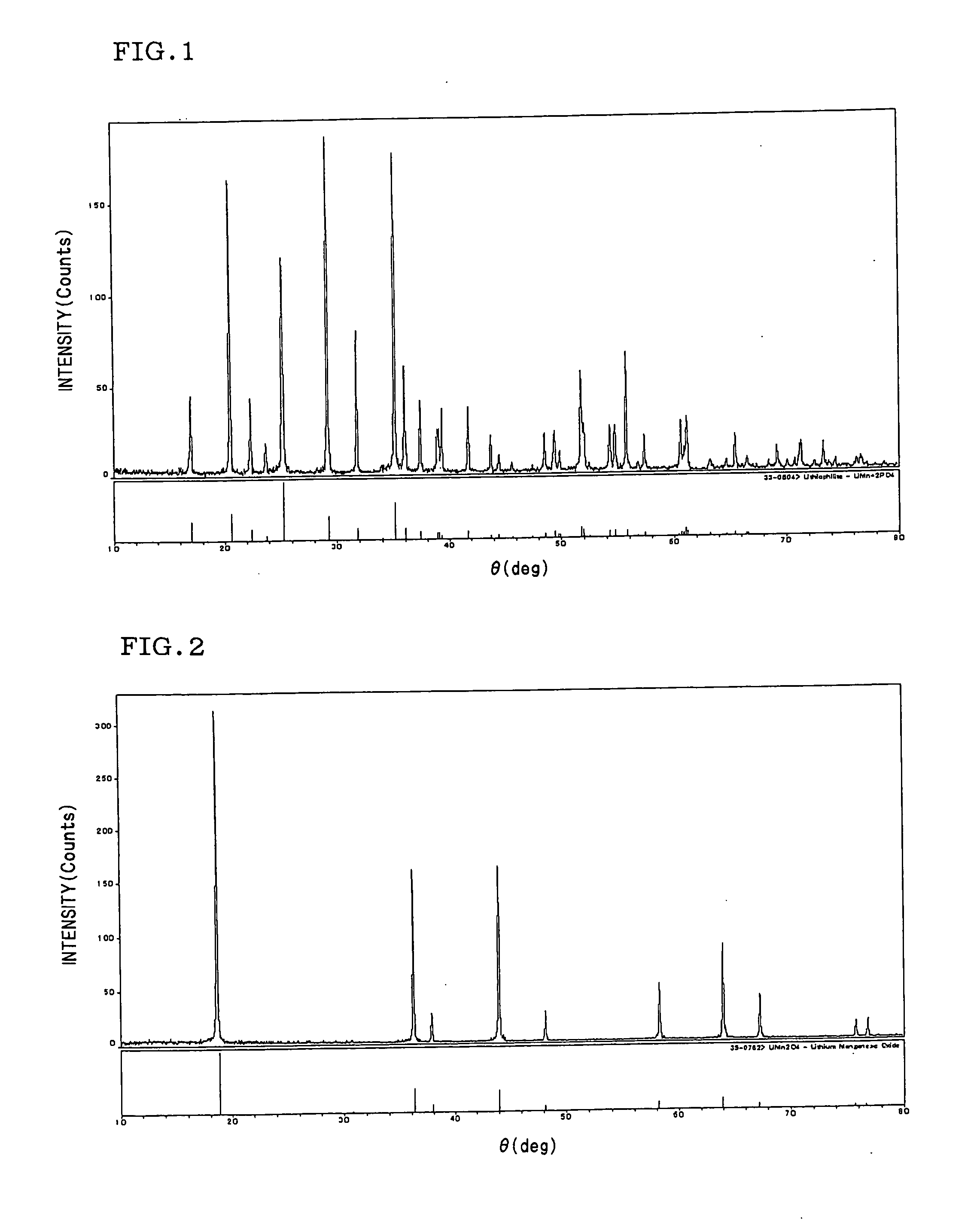Positive electrode for non-aqueous electrolytic secondary cell and non-aqueous electrolytic secondary cell
a technology of positive electrodes and secondary cells, which is applied in the direction of positive electrodes, non-aqueous electrolyte accumulator electrodes, active material electrodes, etc., can solve the problems of cell rupture, cell wherein lithium nickel oxide is used as a positive electrodes does not function well, and the cell is not safe enough to achieve the effect of high potential of a 4 v region, excellent cycle characteristic, and high capacity
- Summary
- Abstract
- Description
- Claims
- Application Information
AI Technical Summary
Benefits of technology
Problems solved by technology
Method used
Image
Examples
examples
[0045] The present invention will be described in more detail in accordance with examples, but the present invention is not limited to these examples.
[0046] (Synthesis of Lithium Manganese Phosphate)
[0047] As starting materials, Li2CO3, P2O5, and Mn2O3 powders were used. The materials were weighed and mixed so as to obtain compositions of LiMnPO4 and Li1.1Mn0.9PO4 respectively in a gloved box kept under an argon atmosphere. Next, the respective mixtures were calcined in an oxidizing atmosphere at 500° C. for 15 hours, thereafter fired at 800° C. for 48 hours, and quenched to thereby synthesize lithium manganese phosphate having an olivine structure. The resultant samples were both identified as Pmnb rhombic lithium manganese phosphate having an ICDD33-0803 olivine structure as shown in an X-ray diffraction diagram of FIG. 1.
[0048] Moreover, as to LiM1xMn1-xPO4 (M1 denotes at least one metal element other than manganese_and x has the same meaning as mentioned above), the following...
PUM
| Property | Measurement | Unit |
|---|---|---|
| temperature | aaaaa | aaaaa |
| temperature | aaaaa | aaaaa |
| temperature | aaaaa | aaaaa |
Abstract
Description
Claims
Application Information
 Login to View More
Login to View More - R&D
- Intellectual Property
- Life Sciences
- Materials
- Tech Scout
- Unparalleled Data Quality
- Higher Quality Content
- 60% Fewer Hallucinations
Browse by: Latest US Patents, China's latest patents, Technical Efficacy Thesaurus, Application Domain, Technology Topic, Popular Technical Reports.
© 2025 PatSnap. All rights reserved.Legal|Privacy policy|Modern Slavery Act Transparency Statement|Sitemap|About US| Contact US: help@patsnap.com


